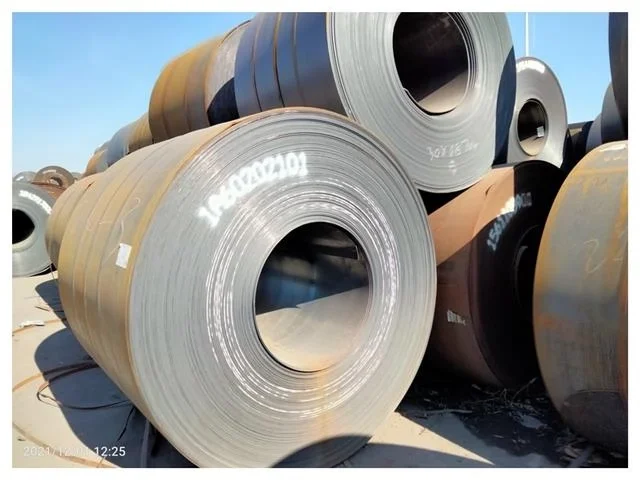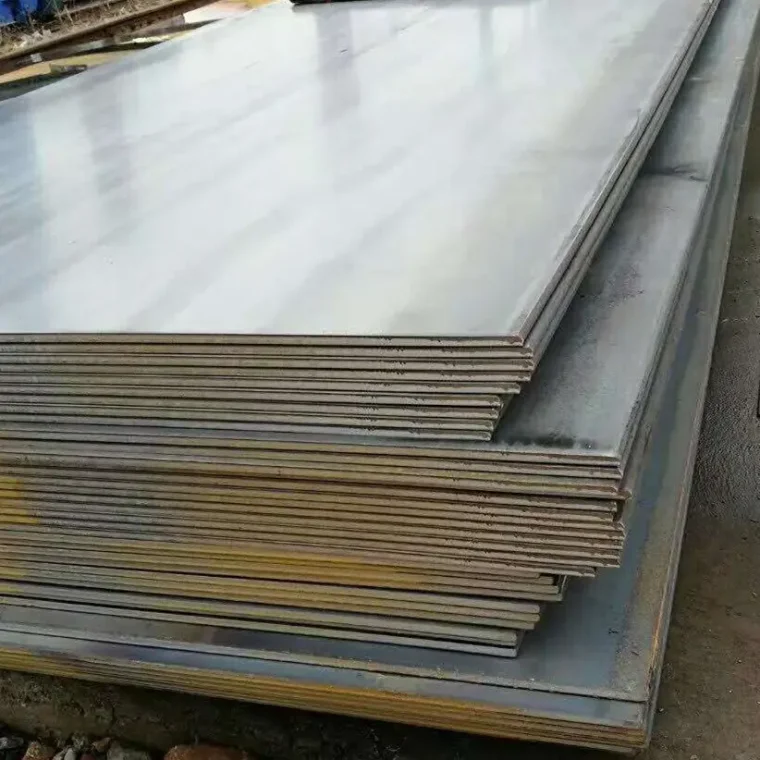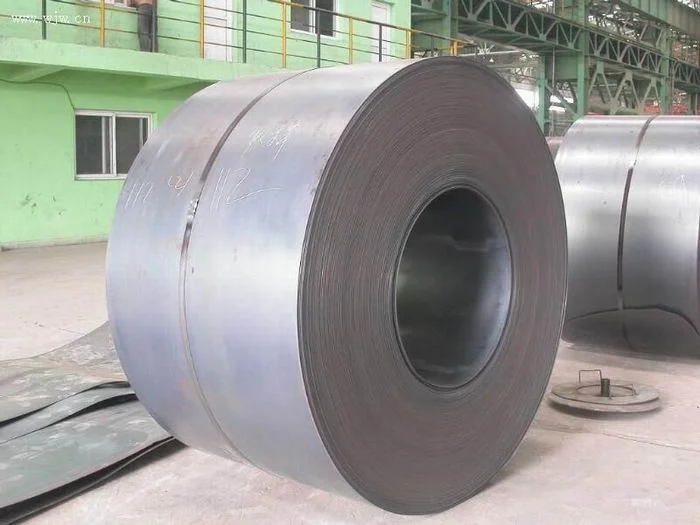Did you know that hot-rolled coils account for more than 80% of all steel produced worldwide? From construction to automotive, hot-rolled coil plays a vital role in a variety of applications. In this article, we take a look at its manufacturing process, benefits, and many uses across industries.
Basics of Hot Rolled Coil
Production Process
Hot rolled coil is a flat steel product manufactured by passing steel through a series of rollers at high temperatures. This process allows for the shaping and forming of the steel into desired thicknesses.
The high-temperature rolling of hot rolled coils results in a product with excellent malleability and strength. This makes it a preferred choice in various industries such as construction, automotive, and manufacturing.
Differences from Other Steel Products
Compared to cold rolled steel, https://www.xs-metals.com/SS400-Hot-rolled-coil.htmlhave a rougher surface finish but are less expensive to produce. They are also known for their greater yield strength and are generally used in applications where surface finish is not critical.
Pros:
Cost-effective production
Higher yield strength
Cons:
Rough surface finish
In contrast to galvanized steel, hot rolled coils do not have a protective zinc coating. While galvanized steel offers better corrosion resistance, hot rolled coils are favored for their superior strength properties.

Production Process of Hot Rolled Coil
Heating Process
Steel billets undergo heating to high temperatures before the hot rolling process begins. The temperature rolling process is crucial for making the steel malleable.
The unprocessed steel is then passed through a series of rollers during the rolling process to reduce its thickness and transform it into coils.
Cooling Process
After the hot rolling process, the coils are rapidly cooled in a controlled environment to maintain their structural integrity. This cooling process ensures the desired thickness and shape of the coils.
Quality control measures are implemented throughout the coils production process to monitor the dimensions, surface finish, and mechanical properties of the steel coils.
Importance of Quality Control
Quality control is vital in steel manufacturing mills to ensure that the final product meets industry standards. It involves rigorous testing and inspection at various stages of production.
Ensures consistency in coil thickness and shape
Guarantees the mechanical properties meet specifications
Characteristics and Benefits of Hot Rolled Steel
Rough Surface Finish
Hot rolled steel is characterized by its rough surface finish, a result of the manufacturing process that involves high temperatures and quick cooling. This texture distinguishes it from cold rolled steel.
Lower Cost One of the advantages of hot rolled steel is its lower cost compared to cold rolled steel. This makes it a cost-effective option for various industrial applications.
Easy Shaping Ability
Hot rolled steel offers the benefit of being easily shaped into different forms and structures due to its malleability. This flexibility makes it highly versatile in manufacturing processes.
Structural Integrity With its inherent strength and durability, hot rolled steel is known for its exceptional structural quality. It maintains its properties even under high stress conditions, making it suitable for demanding applications.
Ideal for Strength and Durability
Hot rolled steel is widely used in industries where strength and durability are paramount. Its ability to withstand high temperatures and good welding properties make it ideal for structural components in construction and machinery.

Hot Rolled vs. Cold Rolled Steel
Manufacturing Processes
Hot rolling involves rolling steel at high temperatures, typically above 1700 degrees Fahrenheit, making it easier to shape and form into various steel shapes. On the other hand, cold rolling is done at room temperature or slightly above, resulting in tighter dimensional tolerances.
Cold rolling capabilities allow for the production of steel forms with smoother surfaces and precise dimensions compared to hot rolled products. This process also enhances the strength and hardness of the material, making it ideal for applications requiring a higher degree of precision.
Surface Finish and Applications
Hot rolled steel has a rough surface finish due to the high temperatures involved in the process. It is commonly used in applications where aesthetics are not a primary concern, such as structural components in construction. In contrast, cold rolled steel has a smoother surface finish, making it suitable for applications that require a clean, polished look, such as automotive panels and appliances.
Material Choice Influence
When selecting between hot rolled and cold rolled steel, material choice depends on factors like required surface finish, dimensional accuracy, and mechanical properties. Hot rolled steel is preferred for projects where cost-effectiveness and malleability are crucial, while cold rolled steel is chosen for applications demanding precise dimensions and a refined appearance.
Applications of Hot Rolled Coils
Industries
Hot rolled coils find applications in various industries, including construction, automotive, and manufacturing. These coils are essential in producing a wide range of products due to their durability and strength.
Products
Steel coils are transformed into beams, channels, and sheets through hot rolling processes. These products play crucial roles in construction projects, providing structural support and forming the foundation of buildings and bridges.
Versatility in Manufacturing
Hot rolled coils exhibit remarkable versatility in different manufacturing processes. They are used to create steel pipes for plumbing systems, steel strips for packaging materials, and even stainless steel coils for various applications. The flexibility of hot rolled coils makes them integral components in the production of diverse goods.
Closing Thoughts
In wrapping up, you've delved into the world of hot rolled coils, uncovering their production process, characteristics, benefits, differences from cold-rolled steel, and various applications. This journey has equipped you with a solid understanding of why hot rolled coils are a vital component in numerous industries. Harnessing their strength, durability, and cost-efficiency can undoubtedly elevate your projects to new heights.
Explore further applications and industries where hot rolled coils play a crucial role. Stay updated on the latest advancements and innovations in the steel manufacturing sector to make informed decisions for your projects. By leveraging the knowledge gained here, you can optimize your use of hot rolled coils and maximize the benefits they offer. Keep pushing boundaries and creating with the reliability of hot rolled coils at your disposal.

Frequently Asked Questions
What is a Hot Rolled Coil?
A hot rolled coil is a type of steel coil that is produced by heating raw material and passing it through rollers to achieve the desired thickness. It is commonly used in various industries for its strength and versatility.
How is a Hot Rolled Coil Produced?
Hot rolled coils are produced through a process where the steel is heated above its recrystallization temperature and then passed through rollers to flatten it into the desired shape and thickness. This process allows for the creation of strong and durable steel products.
What are the Characteristics and Benefits of Hot Rolled Steel?
Hot rolled steel exhibits excellent strength, formability, and durability, making it suitable for a wide range of applications. Its benefits include cost-effectiveness, ease of production, and versatility in shaping and forming for different uses.
What are the Differences Between Hot Rolled and Cold Rolled Steel?
The main difference lies in the production process: hot rolled steel is processed at high temperatures, making it easier to shape but less precise in dimensions, while cold rolled steel is processed at lower temperatures, resulting in tighter tolerances and a smoother surface finish.
Where are Hot Rolled Coils Commonly Used?
Hot rolled coils find applications in various industries such as construction, automotive manufacturing, pipelines, machinery, and more. They are preferred for projects requiring strength, durability, and the ability to be easily shaped or formed to meet specific requirements.







